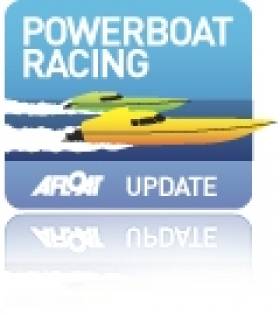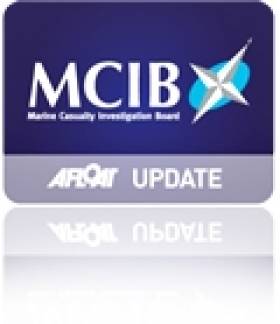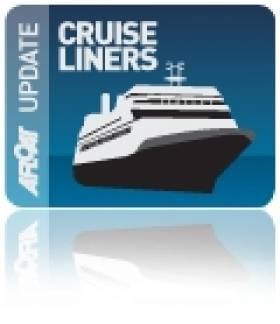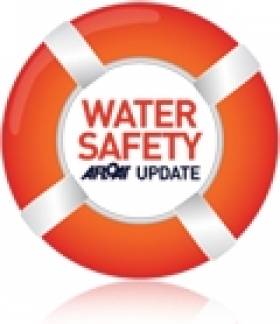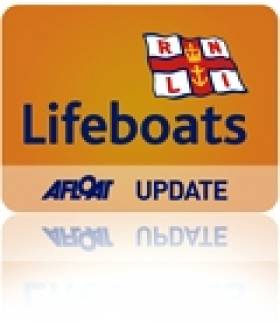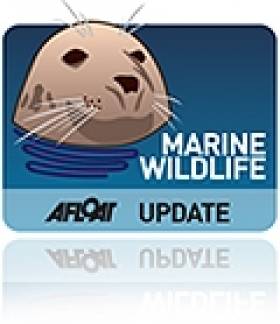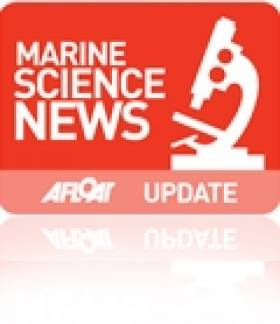Displaying items by tag: Galway
Galway Sea Scouts Repeat Success In ISA Powerboat Challenge
#Powerboats - The 24th Galway Sea Scouts made it two in a row when they came out tops in the ISA Powerboat Challenge for the second year running last weekend.
The winning team - consisting of Fionn Delahunty, Ciaran Jordan, Eamonn Murphy and Róisín Jordan, with manager Alan Delahunty and coaches Caran Oliver and Graham Daly - faced an ever tougher challenge at this year's event held in Galway Bay and around Galway Docks on Saturday 19 October.
They fended off strong competition from Galway City Sailing Club and Bellacragher Boat Club to take this year's title across a series of water exercises that included rescuing capsized dinghies and canoes, and lee shore rescues.
But Galway City didn't leave the challenge empty handed, as team member James Rattigan took the new award for 'best helm' at the evening's presentations at the Galway Harbour Hotel.
Galway Oyster Festival Gets Under Way
#Galway - Today 26 September marks the start of the 2013 Galway International Oyster & Seafood Festival, with a full four days of gastronomic goodness in the City of the Tribes.
Probably the most internationally recognised Irish festival after St Patrick's Day, and the world's longest running oyster festival, the weekend includes a whole host of events to enjoy, from seafood trails and oyster hot spots to the oyster shucking contests – including the Oyster 'Olympics', the World Oyster Opening Championship.
Alongside local food producer tours, some of Galway's best restaurants will hold foodie talks and tasting events, and will represent in the intimate 'food village' at the Festival Marquee.
On Saturday night, a sold-out Mardi Gras-style gala masquerade will parade through the streets of Galway.
And on Sunday, the Tribal Oyster Feast Off oyster eating competition will take place along with family activities, live music, cooking demonstrations, a 'Hot Oyster Awards' cooking challenge and more.
Established in 1954, the Galway International Oyster & Seafood Festival has welcomed over half a million visitors and consumed more than 3 million oysters – washed down with champagne and stout while listening to some of the best musicians in Ireland.
For more information on the festival, follow on Twitter @galwayoyster
#MCIB - Marine investigators have emphasised the dangers of drinking while at sea in the official report into the death of a lobster fisherman off Galway in April last year.
The body of Gerard Folan was recovered from the waters off St MacDara's Island, near Carna in Co Galway, on the morning of 24 April 2012 after he was reported missing the night before.
According to the report into the incident by the Marine Casualty Investigation Board (MCIB), Folan had set off in his currach from Dooeyher Pier in Carna around lunchtime on 23 April to check on lobster pots some 3nm away, off Deer Island - promising to contact his father on his return.
Folan was shortly after observed by another fisherman in the area, and was reportedly not wearing an oilskin nor a lifejacket.
Some hours later Folan's father went around the local piers but did not find his son. Later still, Folan's ex-wife contacted Clifden Coast Guard to report his disappearance and a search effort was mobilised.
Early the next morning, before the search resumed at first light, the fishing vessel Ocean Breeze sighted a drifting currach that was found to be Folan's. His body was later recovered off St MacDara's Island around 11am.
According to the MCIB report, it was not possible to determine how Folan became separated from his boat, though it was found that the currach's outboard engine had no kill cord attached, so it is probable the engine was running and the boat motored out of reach when he went overboard.
Although Folan was regarded as a strong swimmer, the post-mortem found elevated levels of alcohol in his bloodstream, which the MCIB report said would have hindered his attempts to swim back to his vessel.
Investigators also highlighted the "undue delay" in raising the alarm when Folan has failed to return earlier on the evening of 23 April.
The full report into the incident is available to download below.
Galway Diver Survives Conger Eel Attack
#CongerEel - A Galway businessman had a life-threatening encounter with a conger eel while SCUBA diving in Connemara last month, as the Connacht Tribune reports.
Jimmy Griffin, who owns Griffins Bakery on Galway's Shop Street, describes the wildlife attack as like being "hit by a freight train".
He continued: "It had me by the face and I was being tossed around like a rag doll. It hit my head really hard. My regulator was knocked out of my mouth.
"I knew something was after hitting me and biting me, but I didn’t know what it was. I couldn’t get my hands around it, it was so big. I managed to wrestle it off and the pain started to set in on my face.”
The pain was from a serious bite to the side of his mouth that would have sent a less experienced diver into a dangerous panic.
The Connacht Tribune has much more on the story HERE.
Largest Residential Cruise Liner is Galway Bound
#CruiseLiners - The world's largest residential cruise liner is set to visit the City of the Tribes next week, according to the Galway Independent.
The floating town known as The World is expected to arrive in Galway Bay next Monday 8 July for a single night's stay after a similar stop this morning at Belfast and later this week at Derry.
Distinct from other cruise liners that ply the oceans, The World comprises a residential community of some 130 families who between them own the 12-deck, 200-metre-long vessel.
Galway Harbour Master Captain Brian Sheridan described The World's visit as "a great opportunity to showcase the city and the region to its passengers and a welcome economic boost" - despite the ship being too large to enter Galway's inner harbour.
Providing berthing space for the modern generation of cruise ships is one of the goals of the planned expansion of Galway Port, though it emerged this week that the planning application had still not been submitted to An Bord Pleanála.
The Galway Independent has more on The World's visit HERE.
#Tourism - The world-class surfing hotspot of Sligo has failed to make the grade in Fáilte Ireland's long list of leading tourism towns for 2013, according to the Irish Independent.
The north-east county was among a surprise selection of areas known for their maritime and waterways attractions - such as Westmeath on the Shannon and Galway, host of last year's Volvo Ocean Race finale - that were not featured in the Irish tourism board's list of 45 towns and villages put forward for the Highly Commended Tourism Towns award, part of the National Tidy Towns Awards to be announced later in the year.
Counties on the water that did make the cut include Clare and Mayo, with five towns each on the list, Kerry with four - including last year's winner Portmagee - and Donegal and Waterford, represented three times each.
The top prize winner, to be announced by Fáilte Ireland in November, will receive €10,000 in supports for tourism marketing and development.
Though Sligo is conspicuous by its absence, Donegal's triple placing shows the north-east region is a big tourism attraction - and the Tripclocker blog says surfing is at the forefront of that.
With Ireland's exposure to the open Atlantic giving is "better waves more often", according to Killian O'Kelly of Bundoran's Turn n' Surf, there is a wide variety of surf beaches stretching from Donegal to Clare in particular with swells for all levels of experience.
#Drowning - Three drownings over the weekend have underlined the importance of safety on the water during the current sunny spell.
In Galway, residents of Moycullen were mourning the loss of a Lithuanian man who drowned while swimming with friends in Ballyquirke Lake on Saturday evening 8 June, according to Galway Bay FM.
And RTÉ News reports of a similar incident in Cork in the early hours of this morning 10 June, in which a 21-year-old man drowned after getting into difficulties in the River Lee near Ballincollig.
The young man is also believed to have been swimming with friends after another hot day across the country, according to The Irish Times.
Elsewhere in Cork, RTÉ News says a 17-year-old has died after drowning in the River Blackwater.
Earlier it was reported that the teen was in a serious condition after getting into difficulties while swimming with friends at a bathing spit known locally as Lisheen Bridge, and had been in the water for some time before he was recovered.
Clifden RNLI Rescues Inishbofin Casualty
#RNLI - Clifden RNLI‘s Atlantic 75 lifeboat launched on Thursday afternoon 6 June in response to a coastguard request to assist in the transfer of a casualty from Inishbofin Island in Co Galway to the mainland.
A 61-year-old man, who was visiting the island, had sustained significant facial injuries following a fall from a bicycle. Clifden RNLI lifeboat helm James Mullen, a full-time paramedic, was able to assess the casualty’s injuries on arrival.
Having checked him over, he and the other voluntary crew members transported the man quickly and safely to Cleggan pier and an awaiting ambulance, which then transferred him to University College Hospital Galway for further treatment.
Mullen said of the launch: “I was glad to be available to assist on this callout to Inishbofin today. Our swift launch and recovery time is vital regarding our local islands, and while the casualty’s injuries were not life threatening, they were certainly serious enough to warrant urgent medical attention.”
Inishbofin Island is located five miles off the Connemara coast and is a popular summer holiday destination.
The Clifden RNLI lifeboats have undertaken many launches to and exercises around the island, including with the island’s main ferry. And as previously reported on Afloat.ie, the station was recently chosen to trial the new Mersey class all-weather lifebo
Beaked Whale Strandings Total 3 For May
#MarineWildlife - Another beaked whale stranding has been recorded on the Irish coast just weeks after two of such creatures were found in Donegal.
A ranger with the National Parks and Wildlife Service (NPWS) made the discovery at Aillebrack in Co Galway on the evening of 27 May.
The 5m carcass of a female - like the female and juvenile found in the northwest - is thought to be either a True's or Sowerby's beaked whale.
Mick O'Connell, strandings officer with the Irish Whale and Dolphin Group (IWDG), says the latest stranding "raises new questions", with suspicion that its death may be linked to the face of the Donegal pair earlier this month.
As previously reported on Afloat.ie, beaked whales are a rare occurrence in Irish waters, with the last record before this month' stranding made in 2009.
Marine Institute To Be Centre of Global Marine Research
#MarineScience - Galway Bay FM reports that the Marine Institute in Galway is to become one of the world's leading marine research centres.
The news comes in the wake of a groundbreaking deal signed in Galway on Friday afternoon (24 May) between the EU, the US and Canada to join forces on Atlantic Ocean research, as previously reported on Afloat.ie.
All partners have agreed to commit to funding to study the interplay of the Atlantic with the Arctic Ocean, and discover ways that research on the oceans and marine wildlife can contribute to scientific advances in other areas.
Meanwhile, a monitoring system for waste waters is among the projects that will benefit from a near €1 million in funding from the Science Foundation.
Research Minister Seán Sherlock announced the funding for projects at NUI Galway that is hoped to deliver "commercialisation of research in a range of areas".



























